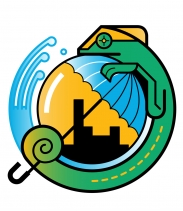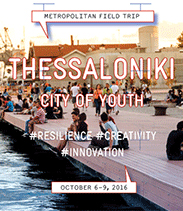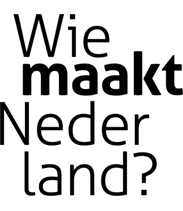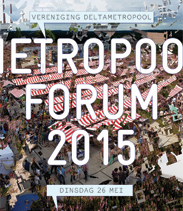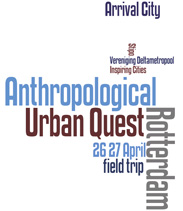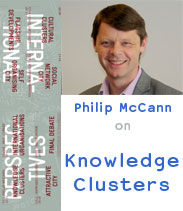Deltametropolis Association and Movares presented the SprintCity planning support tool among international TOD experts at the BUFTOD 2012 conference in Paris (Marne-la-Vallée). SprintCity investigates opportunities for transit-oriented development (TOD) in The Netherlands, using a simulation game toolkit based on real data, with real stakeholders.

Goals of the presentation were to share the current results of the SprintCity project with international urban planners and to discuss whether our planning support tool can be effectively implemented in other regions and cities.
Response to the SprintCity project
There was a very good response from the international community to the project and fruitful application of the SprintCity tool was suggested in the city regions of Toulouse, Paris, Bogotá, Flanders, Alicante and the central plain of Mexico. We are hopeful that several of these potential implementations will happen over the next year.
Downloads
| SprintCity folder | (PDF, English)
| SprintCity BUFTOD paper | (PDF, English)
| SprintCity BUFTOD paper | (ISSUU, English)
Related
| read more on SprintCity |
| SprintCity presentation in China |
| SprintCity Hong Kong travel report | (Dutch)
The conference
The BUFTOD 2012 conference joined several international researchers and planners. There was a certain Eurocentric perspective, followed by North America and Asia. Although some of the efforts were ‘lost in translation’, in general it was a good opportunity to build a global TOD network.

The Dutch were extremely well represented, with several universities and case studies. I took a Thalys train with Dutch researchers from the University of Amsterdam and Delft University of Technology.
International good practices were compared, contributing to better understanding of different development models and the specific conditions that led to these strategies in each country. It became clear once again, that ready-made solutions (prêt-a-porter) don’t exist. However, we can learn of how each case has managed to remove a barrier to TOD.
BUFTOD key-notes
Robert Cervero, a known authority in the field of TOD, mentioned the importance of organized density (Curitiba) in contrast to scattered density (São Paulo); the potential of functional mix and re-use of brown-field sites and industrial complexes near transit stations (Dallas, Seattle); and high integration of Bus Rapid Transit systems with surrounding development (Guangzhou) versus low integration (Bogotá). Cervero was rather surprised with the critical Dutch projects at the conference, since the Dutch slow traffic and public transport systems generally serve as good examples abroad.
 Claude Soulas showed the Port-Vert project in Noisy (Marne-la-Vallée), about inter-modality around the regional RER train system. Currently, the bicycle feeds 1,8% of these metropolitan trains, whereas the best European practices reach 40-50% of bike pre-transport to railway stations. Furthermore, the functional mix of greater Paris needs to be improved, as the East is predominantly residential and the opposite side around La Défense concentrates a huge amount of jobs.
Claude Soulas showed the Port-Vert project in Noisy (Marne-la-Vallée), about inter-modality around the regional RER train system. Currently, the bicycle feeds 1,8% of these metropolitan trains, whereas the best European practices reach 40-50% of bike pre-transport to railway stations. Furthermore, the functional mix of greater Paris needs to be improved, as the East is predominantly residential and the opposite side around La Défense concentrates a huge amount of jobs.
Railroads in Central Paris
Paris has been an inspiring test site for everything connected to TOD. One can find good functioning terminal 'gares', traditionally from the nineteenth century, such as Gare St. Lazare and Gare du Nord. All station buildings are completely integrated in Paris' street pattern and boulevards.

Gare Montparnasse set the scene for one of the most iconic train accidents in history. In 1895, a locomotive burst through the main facade, after having trouble with dis-functioning breaks. The station was completely rebuilt in 1969, establishing a heavy green deck on top of the platforms, with trees, event spaces and tennis courts. The square is flanked by enormous modernist buildings on three sides, and one of Paris' highest office towers.


In suburban neigbourhoods, such as Noisy, regional RER stations are integrated with social housing, shopping centers and extensive parking facilities. The surroundings of station Noisy Le Grand are dominated by roads and drive-in functions, while the RER station itself is situated underground. Hereby it has become a somewhat contradictory example of TOD, visually resembling a car-dependent environment.
The Promenade Plantée is an early example of reuse of an obsolete railroad viaduct. It was refurbished as an elevated park in the 1980's and 1990's and has since that time propelled revitalisation of the adjacent neighbourhoods. The trail consists of both elevated and street level sections, as well as a tunnel section. It has served as an example for many other transformation projects, such as the New York High Line.

TOD around the globe - fragments of the conference
Adrien Gey presented a circular slow traffic network in the Grand Paris region, connecting various parks and natural sites to housing and work areas. Guowen Dai demonstrated some of the challenges around the new high-speed South Station in Nanjing. An area of 32 square kilometers should become a ‘new town’ of 60.000 people. However, current urbanization has not occured according to the master plan, and integration of the station with metro and road networks will be challenging.
Wendy Tan showed that TOD projects all over the world keep track of each other and sometimes copy-paste design solutions from other contexts into their own.
Maria Palumbo analyzed the motor-taxi system in Cotonou (Benin), which is starting to evolve into a formal system by recognizable yellow driver t-shirts. The Cotonou model is being exported to other cities in the West-African region, such as Bamako in Mali.
Armando Padilla investigated TOD implementation possibilities in the Alicante province and Murcia region, according to the Dutch Stedenbaan experience. The polycentric region suffers from sprawl and the real estate crisis, which makes improvement of rail transport very challenging.
Juliette Maulat presented metropolitan density targets for a rail corridor west of Toulouse. Between 2000 and 2010 the frequency of the service was raised to 4 trains per hour, leading to an increase in ridership. However, the improvements on the transport system merely supported urban development, and did not shape them to the desired densities.
Paul Chorus demonstrated that the Tokyo metropolitan government regulates density and public space around transit stations by granting higher floor area ratios to developers. Transit companies develop diverse activities along a corridor to create off-peak travel and make more profit. The companies gain life-time concessions and thoroughly investigate their territory and residents to optimize revenues.
Elina Krasilnikova and Yulia Ivanitskaya presented the longitudinal industrial city of Volgograd (Stalingrad), with 100km length and 9km width one of the longest cities in the world. A new waterfront transport axis could initiate redevelopment of the industrial sites along the river and make place for a linear park and leisure facilities.
Wulfhorst and Alain L’Hostis discussed the German-French collaboration project Bahn. Ville, which was directed at integration of transport and spatial planning at two reference sites: St. Etienne and Thaunusbahn (Frankfurt). Implementation of TOD in Saarterassen, near the French-German border, is still difficult due to sectoral responsibilities and lack of an integrated lobby agent for TOD. Despite these setbacks, they have the following advice:
More information
E-mail: | sprintstad@deltametropool.nl |
Phone: +31 10-2041599
The New Planning is a collaborative research project between Deltametropolis Association and TU Delft. A consortium of academic, civil society, government and market sectors is being created to meet the urgent need for a new model of strategic spatial planning that will keep the Netherlands at the forefront of territorial governance.

 Archief
Archief








